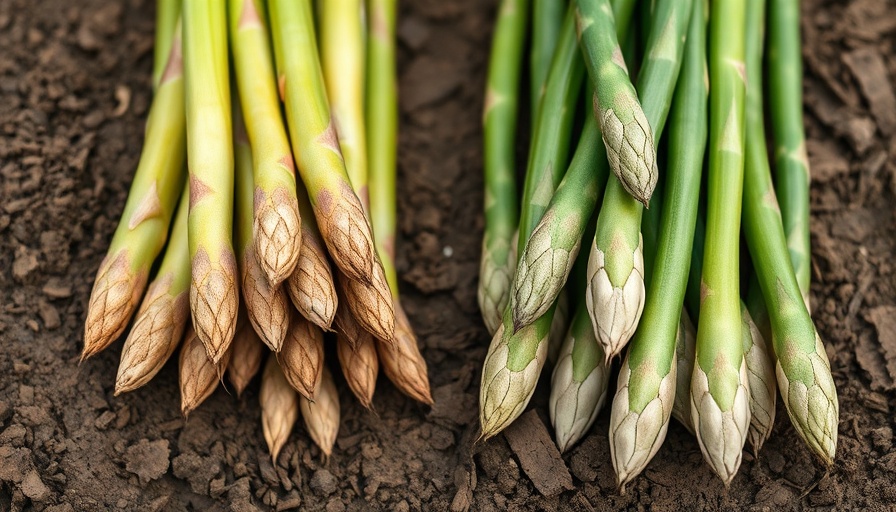
Unlocking the Secrets to Growing Asparagus
Asparagus, often lauded as one of the first heralds of spring, offers not just a deliciously unique addition to our plates but also a rewarding gardening experience. This perennial vegetable, known scientifically as Asparagus officinalis, can be a staple in your vegetable garden for decades once established. With patience and care, you will be rewarded with tender spears each season. Whether you’re starting fresh or looking to enhance your existing garden, understanding how to grow asparagus can lead to a fruitful harvest.
Essential Planting Techniques for Success
Successful asparagus cultivation begins long before you see those green spears peeking through the ground. Choosing the right site is crucial; asparagus thrives in locations that receive full sun for 6-8 hours a day and have well-drained soil. The ideal soil pH is neutral to slightly acidic, around 6.5.
When planting, it’s important to dig a trench 12-18 inches wide and 6-8 inches deep. As you position the crowns, be sure to spread their roots out and cover them carefully with soil, adding extra layers as the plants grow. Methods like “little-by-little” or “all-at-once” planting can be employed depending on your preferred gardening approach.
The Patience of Perennial Gardening
One of the most important things to remember about growing asparagus is patience. Newly planted crowns may take two to three years to produce a significant harvest. The initial growing seasons should be focused on establishing a healthy root system; resist the temptation to harvest during these early years to ensure long-term productivity.
Once established, asparagus can yield up to a half-pound of spears per foot of row during production, offering a bountiful return for your efforts. Additionally, these plants can produce for 15 to 30 years, making them an excellent investment for the perennial gardener.
Managing Weeds and Providing Care
For the first two years, managing weeds is critical as asparagus does not take kindly to having its roots disturbed. Hand-pulling weeds and adding layers of mulch can greatly assist in this regard. Watering during the growing season—about 1 to 2 inches of water per week—is also vital to support healthy growth. Additionally, using organic fertilizers can provide the necessary nutrients for vigorous spears.
Harvesting: Timing and Techniques
Once you’ve successfully navigated the early years and your plants are flourishing, the excitement of harvesting can begin! Typically, it’s best to wait until the third year to start harvesting in earnest. Look for spears that are at least 8 inches tall; the moment they start to open up, they become woody and inedible.
Use a sharp knife to cut the spears at ground level, and be sure to leave some to continue growing and providing strength to the plant. Remember that the harvest window typically lasts 4 to 8 weeks, depending on your region.
Companion Planting for Enhanced Growth
Considering companion plants can be beneficial to your asparagus garden. Plants like dill and cilantro attract beneficial insects, which work to control pests that may threaten your spears. This interplanting can also maximize the space in your garden, ensuring that you’re getting the most out of every planting square.
Common Mistakes to Avoid
Even experienced gardeners can make mistakes with asparagus. Common pitfalls include planting too deep or too shallow, over-harvesting in an attempt to maximize yields too soon, and not preparing the soil properly. Always ensure that you let the plants establish themselves fully before beginning to harvest.
As you embark on your asparagus gardening journey, take the care to understand these factors, and you’ll be rewarded not just with ample harvests but also with the peace of mind that comes from nurturing a garden that will thrive year after year. Happy planting!
 Add Row
Add Row  Add
Add 




Write A Comment